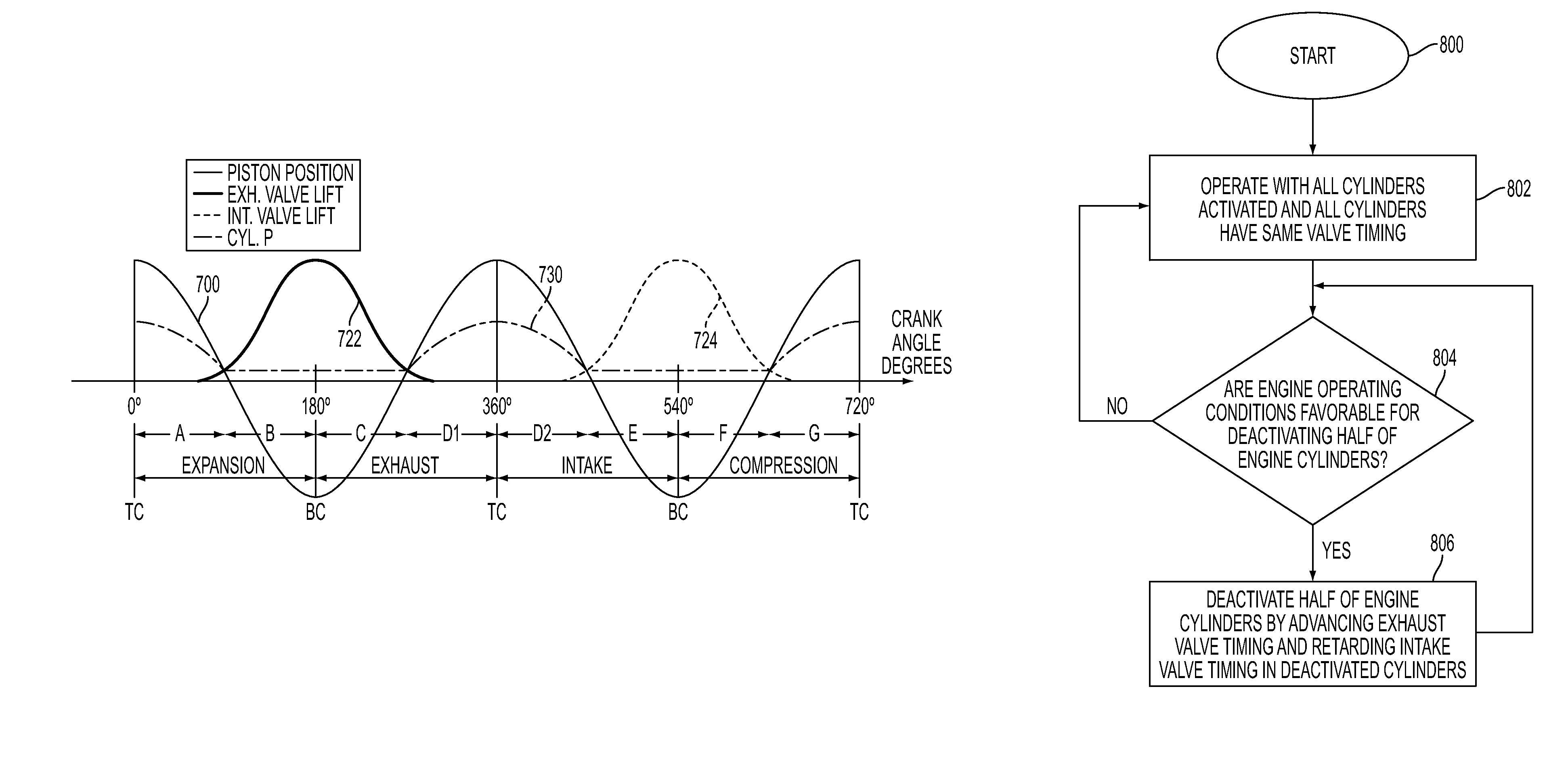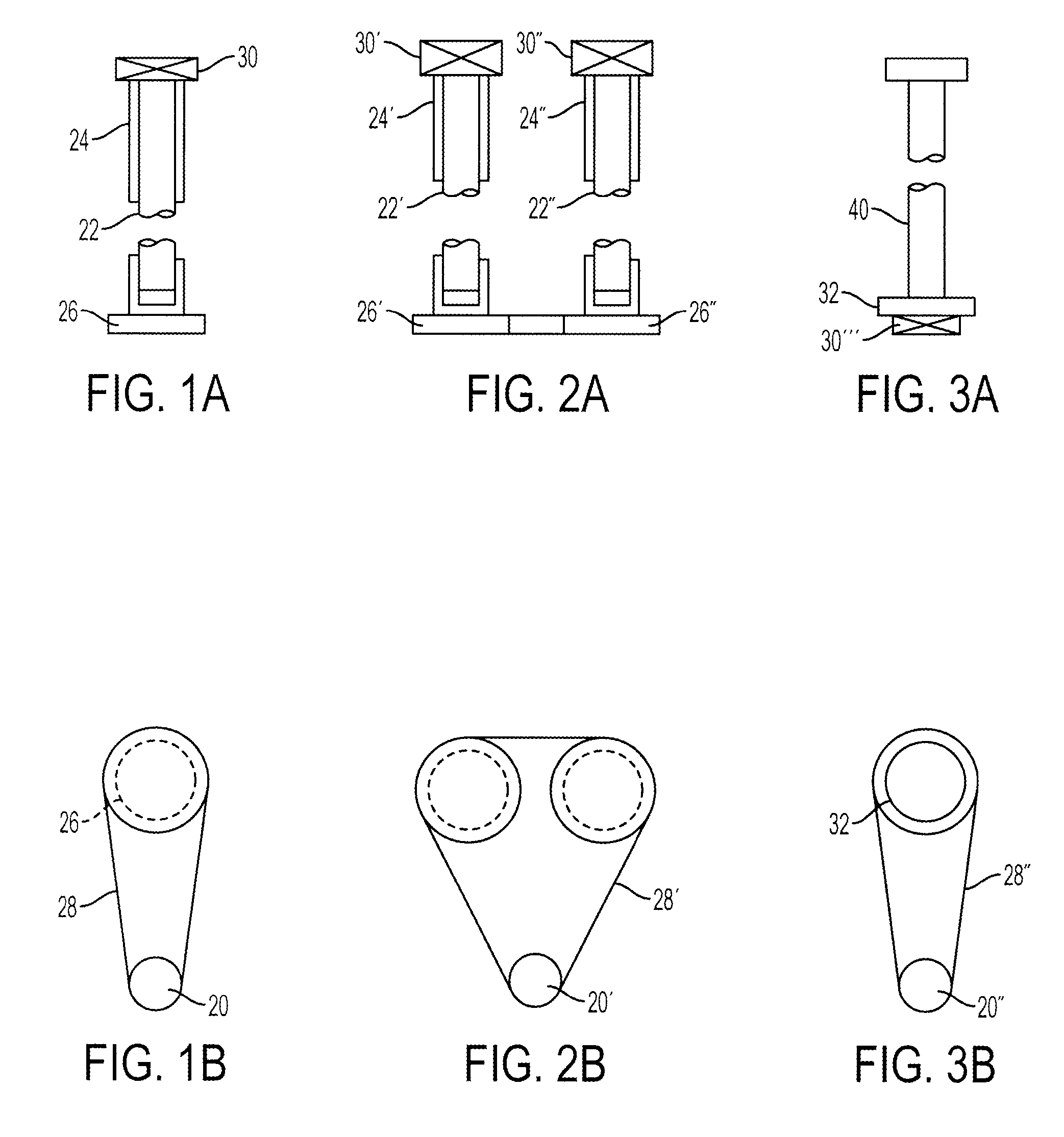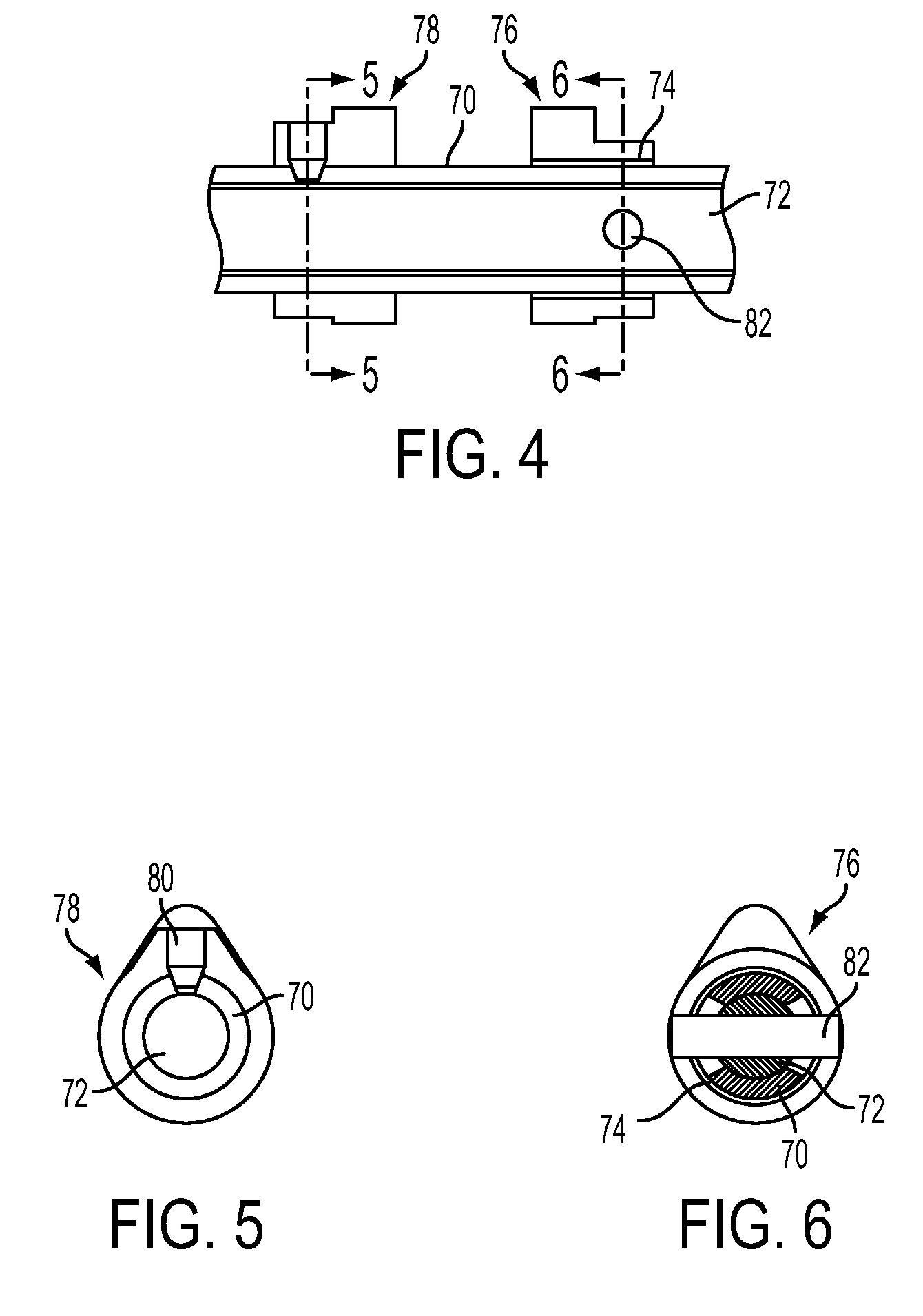Adjusting valve timing to deactivate engine cylinders for variable displacement operation
a variable displacement, valve timing technology, applied in the direction of machines/engines, output power, couplings, etc., can solve the problems of not eliminating the valve deactivator, not being able to adjust both intake and exhaust valve events, and overlap of valves, so as to facilitate a smooth transition of torque
- Summary
- Abstract
- Description
- Claims
- Application Information
AI Technical Summary
Benefits of technology
Problems solved by technology
Method used
Image
Examples
Embodiment Construction
[0039]As those of ordinary skill in the art will understand, various features of the embodiments illustrated and described with reference to any one of the Figures may be combined with features illustrated in one or more other Figures to produce embodiments that are not explicitly illustrated or described. The combinations of features illustrated provide representative embodiments for typical applications. However, various combinations and modifications of the features consistent with the teachings of the present disclosure may be desired for particular applications or implementations. The representative embodiments used in the illustrations relate generally to a multi-cylinder, internal combustion engine having a non-hydraulic variable cam timing device to vary the angular relationship between the camshaft and crankshaft and / or between sets of camshaft lobes to provide variable displacement operation by selectively deactivating cylinders by adjusting valve timing. However, those of...
PUM
 Login to View More
Login to View More Abstract
Description
Claims
Application Information
 Login to View More
Login to View More - R&D
- Intellectual Property
- Life Sciences
- Materials
- Tech Scout
- Unparalleled Data Quality
- Higher Quality Content
- 60% Fewer Hallucinations
Browse by: Latest US Patents, China's latest patents, Technical Efficacy Thesaurus, Application Domain, Technology Topic, Popular Technical Reports.
© 2025 PatSnap. All rights reserved.Legal|Privacy policy|Modern Slavery Act Transparency Statement|Sitemap|About US| Contact US: help@patsnap.com



